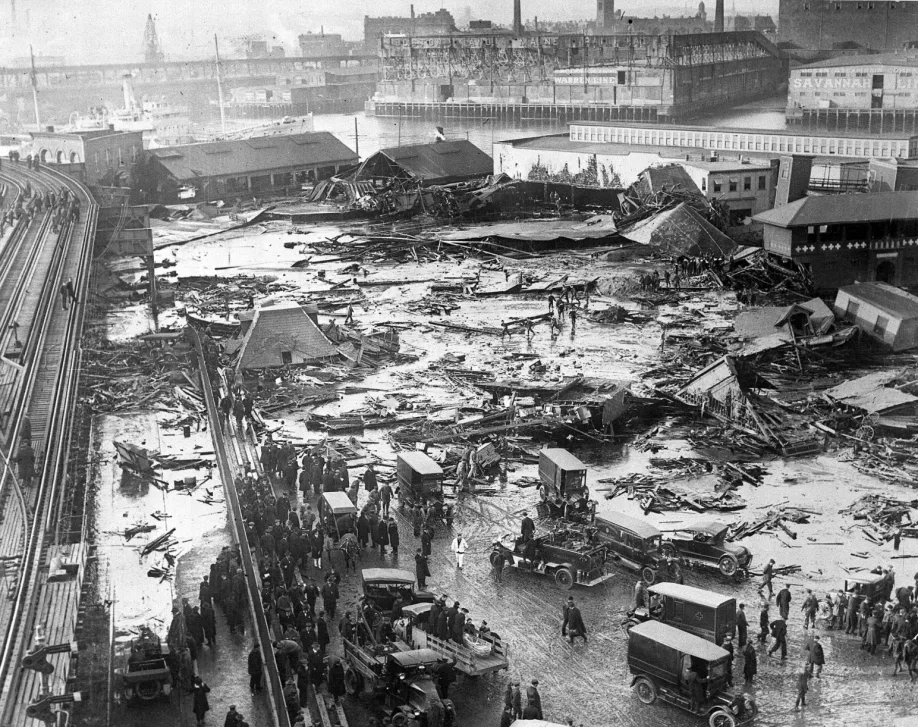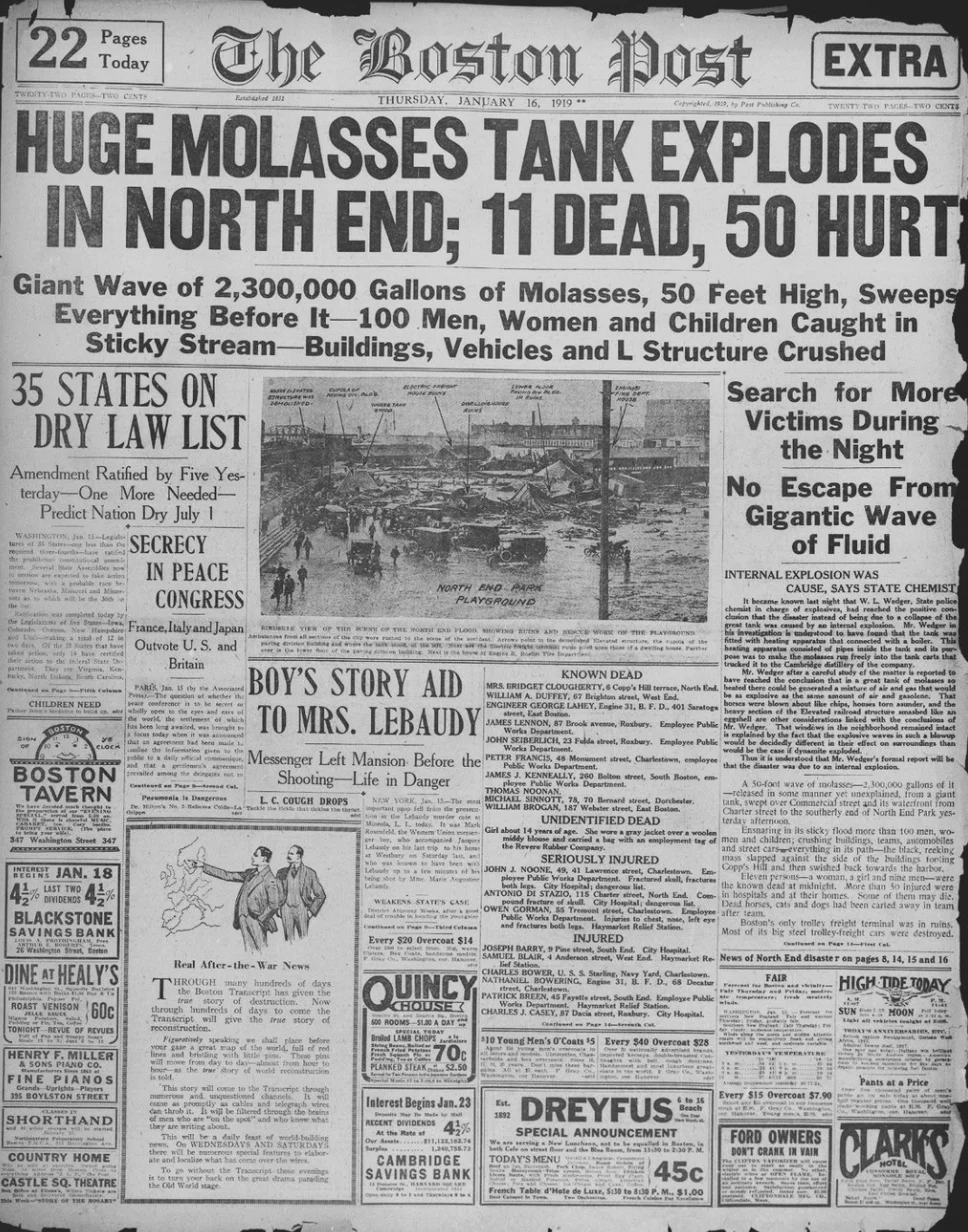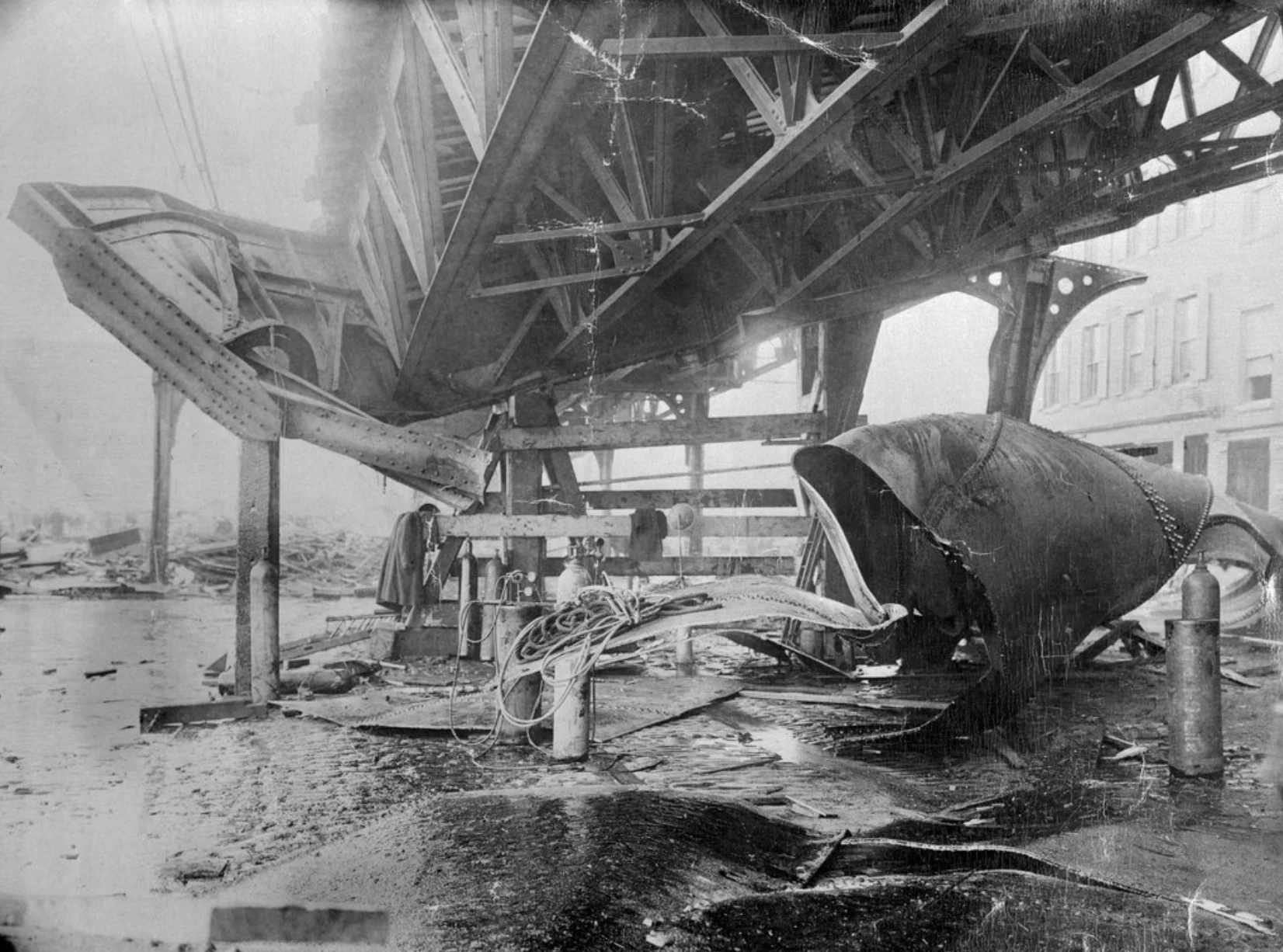
Was Great Molasses Flood caused by temperature complications or human error?
The tank was obviously flawed, children used to collect the molasses that flowed from leaks in the structure.
This Day In Weather History is a daily podcast by Chris Mei from The Weather Network, featuring stories about people, communities and events and how weather impacted them.
--
The Great Molasses Flood was a completely avoidable tragedy. The incident could almost sound silly, but it led to 21 deaths, 150 injuries, trapped horses, and crushed buildings.
On Wednesday, Jan. 15, 1919, 2.3 million gallons of molasses flooded the north-end neighbourhood of Boston, Mass. The reason for the flood could be attributed to human error. Many humans and many errors. But the reason the incident was so deadly could be attributed to temperature.

*Coverage of the Great Molasses Flood from The Boston Post. (Wikipedia).
The molasses tank, located at the Purity Distilling Company facility, was 50 feet tall and 90 feet in diameter and was designed to hold 2.5 million gallons of liquid. The tank was built quickly in 1915 to accommodate the demands of industrial alcohol. Molasses can be distilled to create an alcohol that is used to make dynamite and other explosives, which was in demand during the First World War.
So the tank was created quickly, and inaccurately.
The tank's steel walls were too thin to support a full tank of molasses. The rivets were also too weak to support the pressure of the molasses. The engineers at the time knew that these were flaws and chose to ignore them.
The tank wasn't even tested with water before filling it with molasses. There were obvious signs of the structure failing. Children would bring cups to fill with molasses that flowed from the cracks in the tanks.
The container was filled 29 times before it blew. Only four of those times were near capacity. Two days before the disaster, a ship arrived from Puerto Rico with 2.3 million gallons of molasses in tow.
This is when the first temperature factor came into play. On Jan. 15, 1919, the temperature had risen above 4°C, which was a significant climb from the chilly temperatures of the preceding days.
The metal used to build the tank was too brittle to handle the extreme change in temperatures. So, when the new shipment of molasses was transferred from the ship to the tank, there was a significant temperature difference between the newer and existing product (the new shipment was warmed to reduce viscosity for transfer). This seems to have been the final straw.
At approximately 12:30 pm, the tank burst and 2.3 million gallons of molasses, weighing around 13,000 tonnes, spilled into the streets of Boston at an estimated 56 km/h.

*Damage to the Boston Elevated Railway caused by the flood. (Wikipedia).
The wave of the thick sweet syrup was so powerful it picked up a truck and threw it into the Boston Harbor.
The runnier molasses that fled from the tank entrapped people in the area, which brings up the second time the weather affected this incident. As temperatures cooled, the molasses' viscous increased, trapping those who were caught by the flood.
The residents in the area created a class-action lawsuit against the United States Industrial Alcohol Company, which was the parent company of Purity Distilling. This was the first class-action suit in Massachusetts and is known as a milestone in the creation of modern corporate regulation.
Subscribe to 'This Day in Weather History': Apple Podcasts | Amazon Alexa | Google Assistant | Spotify | Google Podcasts | iHeartRadio | Overcast'
Thumbnail courtesy of Wikipedia










